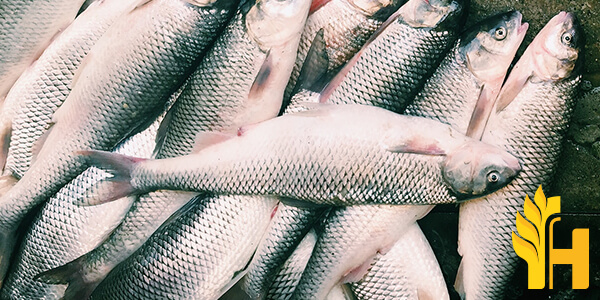Sea Bass price

Where to buy and sell Sea Bass, lowest (cheapest) and highest price.
check offers buy sell Sea BassToday price for Sea BassSea Bass wholesale prices 2022
The Current commodity price of Sea Bass per kg, pound in the world in the global markets
sea bass aquaculture medium
Price range: 7.95 - 11.4 EUR / 1 kg | Market: Mercamadrid | Date: 2025-11-24
sea bass aquaculture medium
Price range: 7.9 - 11.4 EUR / 1 kg | Market: Mercamadrid | Date: 2025-11-20
sea bass aquaculture medium
Price range: 7.9 - 11.4 EUR / 1 kg | Market: Mercamadrid | Date: 2025-11-17
sea bass aquaculture medium
Price range: 7.9 - 11.4 EUR / 1 kg | Market: Mercamadrid | Date: 2025-11-13
sea bass aquaculture medium
Price range: 7.9 - 11.4 EUR / 1 kg | Market: Mercamadrid | Date: 2025-11-10
sea bass aquaculture medium
Price range: 7.9 - 11.4 EUR / 1 kg | Market: Mercamadrid | Date: 2025-11-06
Sea Bass
"Centropristis striata", or striped sea bass, is a species of marine fish in the sea bass family Serranidae. Other common names include stripy seabass, grouper, and rockfish. It is native to the eastern Atlantic Ocean and the Mediterranean Sea. Sea bass is a rather perch-like fish. The more or less elongated body has small scales, the mouth is large, and the tail is generally straight-edged or rounded. Sea bass is carnivorous, feeding on fish, crustaceans, mollusks, and other invertebrates. They may be either monogamous or polygamous, depending on the species. Sea bass is light-bodied fish that are found in tropical to temperate waters around the world. They range from the subarctic waters of Europe to the Mediterranean Sea to northern Australia and New Zealand. Sea bass spawn in inshore waters. The young larvae of sea bass are unique in their feeding habit. They will eat small fish and "marine snow", a mixture of zooplankton, phytoplankton, organic debris, and detritus that sinks to the bottom of the ocean. The striped sea bass is native to the eastern Atlantic Ocean from Iceland and the Faroe Islands southward, including the North Sea and Baltic Sea, Mediterranean Sea. Sea bass are carnivorous, feeding on fish, crustaceans (crabs and lobsters), mollusks (bivalves, squids), and other invertebrates. They may be either monogamous or polygamous depending on the species. They spawn in inshore waters such as bays and estuaries. The young larvae of sea bass are unique in their feeding habit. They will eat small fish and "marine snow", a mixture of zooplankton, phytoplankton, organic debris, and detritus that sinks to the bottom of the ocean. The striped sea bass is native to the eastern Atlantic Ocean from Iceland and the Faroe Islands southward, including the North Sea and Baltic Sea, Mediterranean Sea. They range from Iceland and northern Europe south to Senegal and Cape Verde Islands off Africa, east through the Mediterranean to Turkey, Black Sea excluded. In western Europe, they are rare south of northern France and Scandinavia. They have been successfully introduced to the Black Sea as well as Madeira via aquaculture. In North America, it has been recorded from the San Francisco Bay, California (United States), to central Baja California state (Mexico). There are seven species of sea bass: "Centropristis striata", "C. japonica", "C. forsteni", "C. cabrilla", "Epinephelus coioides" and "E. lanceolatus". Of these, "C. striata" is the largest, reaching a maximum weight of 3 kg and a length of 0.9 m. It is an economically important fish in some parts of the world. Centropristis striata, or striped sea bass, is a species of marine fish in the sea bass family Serranidae. Other common names include striped seabass, grouper, and rockfish. It is native to the eastern Atlantic Ocean and the Mediterranean Sea. The species was described under the name "Serranus striatus" by Carl Linnaeus in 1758. The type locality is given simply as "in mari mediterraneo". In 1815, Georges Cuvier moved this species to Chaetodipterus and renamed it "Chaetodipterus striatus". In 1837, Charles Spence Bate moved this species to the genus Hypoplectrus and named it "Hypoplectrus striatus". It has also been placed in Serranus.Global sea bass production
Sea bass is a globally important fish species, with production occurring in many countries around the world. The total global production of sea bass was estimated to be 1.32 million tonnes in 2016. The top ten producers of sea bass accounted for over 70% of this total production, with China being the largest producer, followed by Greece, Turkey, and Vietnam. Other important sea bass-producing countries include Indonesia, Egypt, Morocco, Thailand, and the United States. Sea bass is typically harvested through commercial fishing operations, though aquaculture of the species is also practiced in some areas. Fish is highly valued as a food source, and is consumed both fresh and frozen. It is also processed into a variety of products, such as fillets, steaks, and whole fish. The global sea bass market is expected to continue growing in the coming years, driven by factors such as the increasing popularity of fish as a healthy food source and the growing demand for seafood in Asia. The market is also being supported by initiatives to promote sustainable seafood consumption. As the demand for sea bass continues to grow, it is important to ensure that production is sustainable and that stocks are managed responsibly to ensure the long-term viability of the species.Download our new
Husfarm App
Stay up to date with the current prieces of agricultural products all over the world.
Do you want to sell agricultural products?
Are you an Agricultural processor looking for high-quality products to buy?
Post an ad for FREE!
